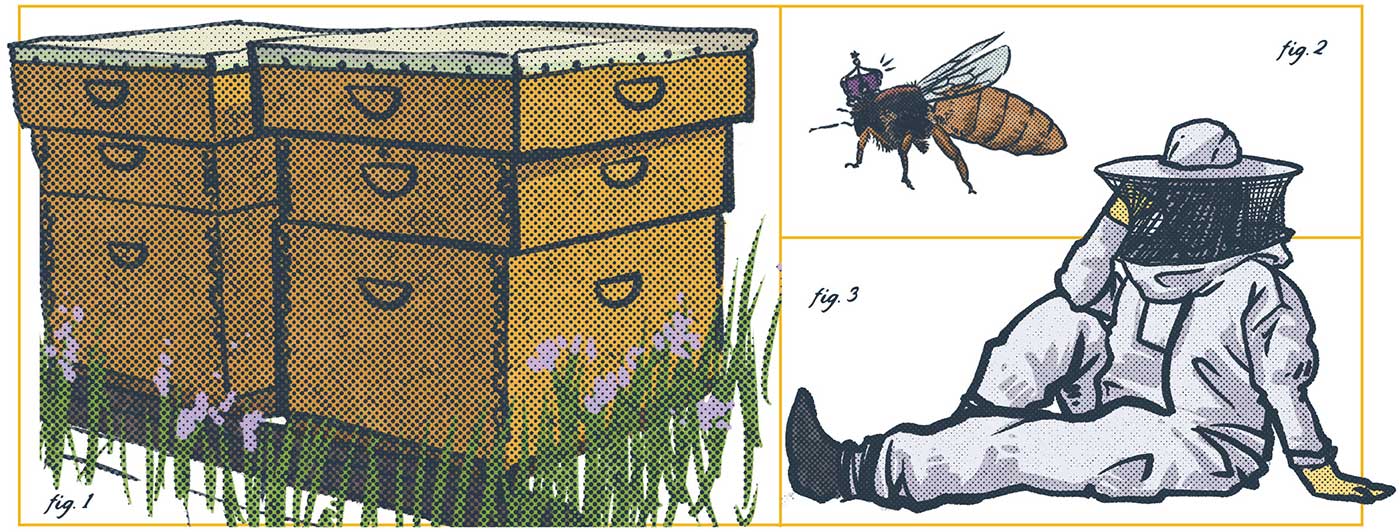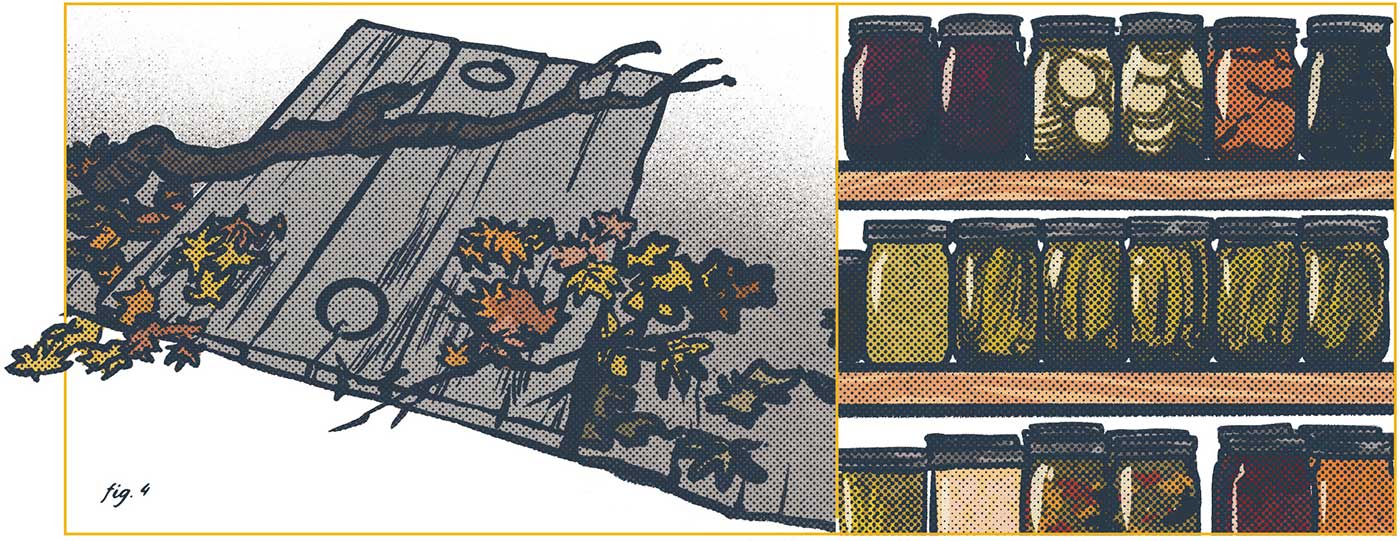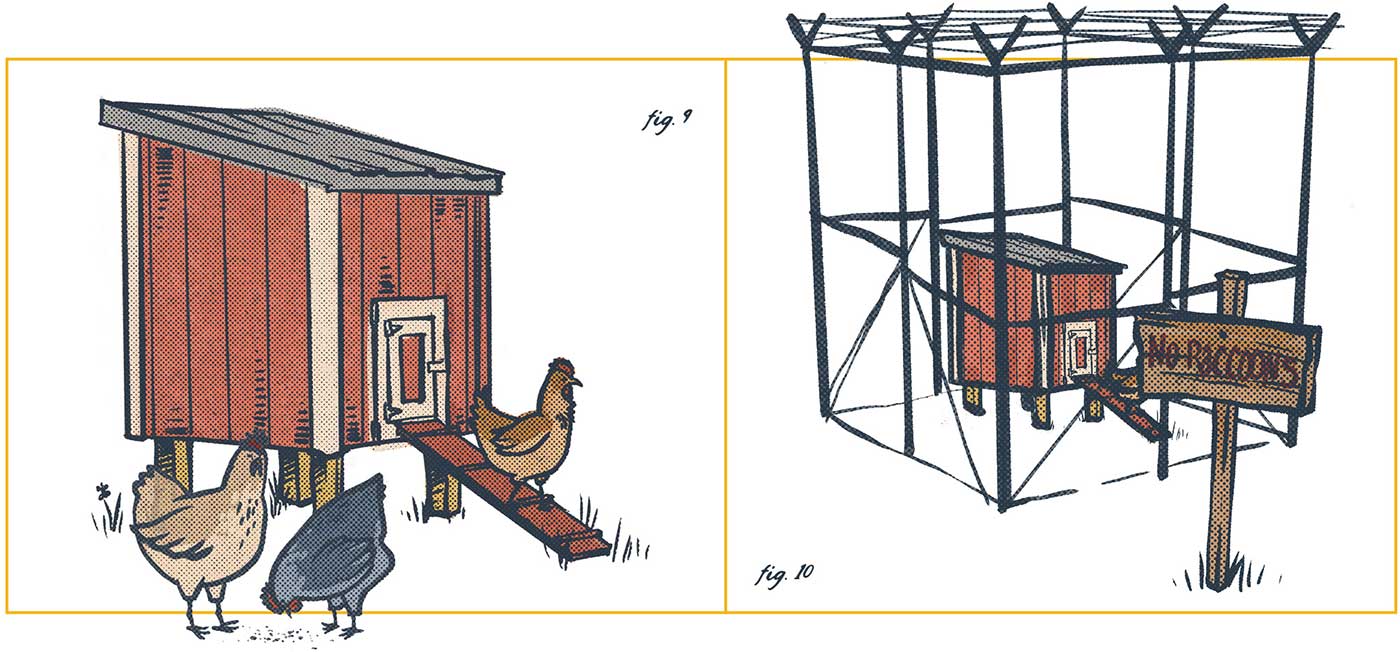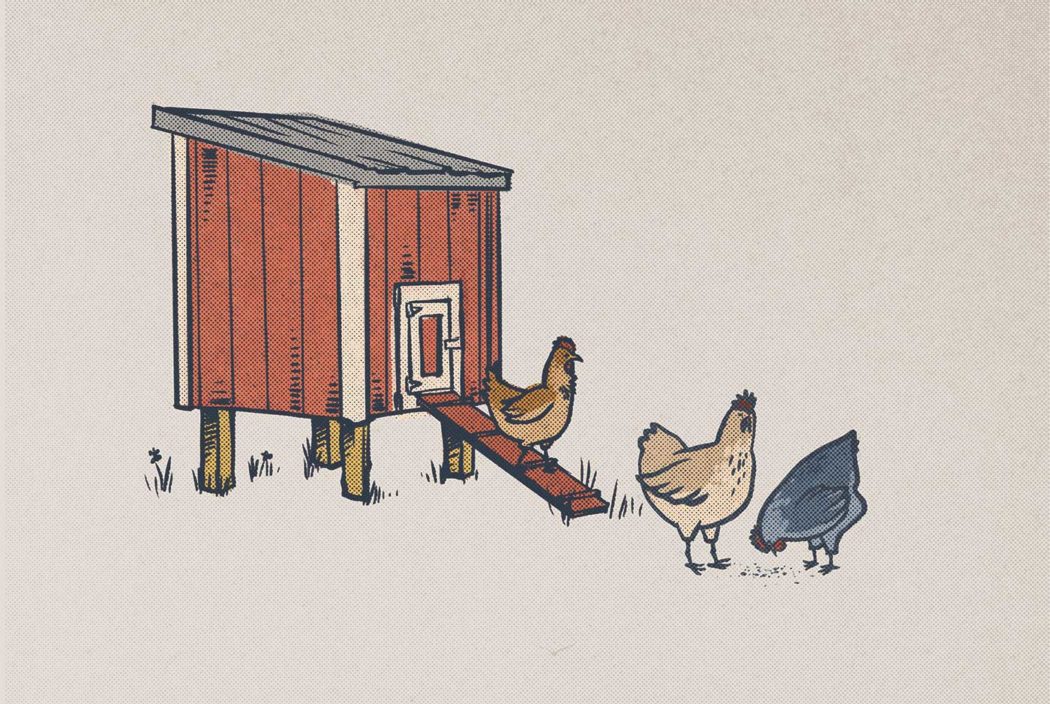Illustrations by Brittany Norris
A very literal guide to everything you need for sustainable hobbies
Something to be said about doing something with your own two hands. Putting them in the dirt or deep inside a beehive and pulling out a rewarding experience. The following will give you a brief explanation of how to prepare yourself before diving into sustainable hobbies or maybe even a whole new sustainable lifestyle. Hopefully with some actual resources to lead you down the right path. Might not pay, but at least it’s honest work.

HONEY
Nothing more glorious than a jar of homemade honey bought off a little stand on the side of the road. Maybe you have big dreams of owning a stand like that one day.
What you’ll need:
- One queen bee (preferably with no ring on it)
- A billion scrub bees (these are male bees, inferior bees, if you will)
- One very sturdy looking cloth-like hazmat suit
- A house for the bees
- 5 EpiPens hidden in various spots around your house
- Mason jars!
Or, support local apiarists (a very fancy word):
Budget $180 a year for a monthly jar of honey from local beekeepers. Check beeculture.com/find-localbeekeeper for options.

CANNING
When the inevitable apocalypse comes to claim our society, you’ll be so glad you took up canning. Shelf-life on your food is now 10x what it used to be. Most importantly, hope you like vinegar, you’ll be doing a lot of pickling.
What you’ll need:
- An underground cellar that could go months without being discovered while inevitably ending up as a real cache for a roving group of travelers who easily uncovered it by moving just a few sticks and leaves (see fig. 4)
- Mason jars!
- Plenty of produce
- Vinegar, or lemon juice, really anything you wouldn’t want to get in your eye
Or, build a community:
Grab some friends and throw a canning party. Attendees can share the cost, workload, and delicious (long-lasting apocalypse-ready) results.

SOURDOUGH
If you tell someone you make your own bread, their respect for you instinctively goes up by about 20%, even more so if you actually give them some of the bread.
What you’ll need:
- Literally
- Just
- Water
- And
- Flour
Or, support local bakers:
Reclaim your time and hit up a local bakery for fresh baked goods.

CLOTHING
To make sure we’re level-setting some expectations here, this will require some degree of talent. So if it doesn’t turn out looking great—well, you were warned.
What you’ll need:
- Scissors
- Fabric
- Band-Aids
- Sewing machine
- Access to the first 18 seasons of Project Runway—make it work

DISTILLED RAINWATER
Could be a very handy tool to have in your back pocket if you decide to become a van-lifer and get off the grid for a while—when you’re not updating your Instagram page, that is.
What you’ll need:
- A pretty large pot
- Hot pads
- A source of fire
- Lid for pot
- Ice cubes
- Bowl to float inside of pot
- A very confident belief that you can
- do this correctly
Or, take it a step at a time:
Buy a rain barrel for $100 and collect stormwater runoff to use for watering plants and the lawn. Do not drink. Baby steps.

RAISING CHICKENS
Maybe you’ll be the worst part of your neighbor’s early mornings, but who is going to want who around once their kids start coming over to ask if they can “see the chickens, please?”
From an expert:
This list is assuming the chickens are fully feathered; raising chicks is a pain in the ass and I do not recommend.
What you’ll need:
- Food
- Water
- A little house, or a “coop” (see fig. 9)
- A very safe distance away from anything with very sharp teeth (see fig. 10)
Or, support eggcellence:
For around $20 a month, buy eggs from a local farm. Check what’s near you at localhens.com

